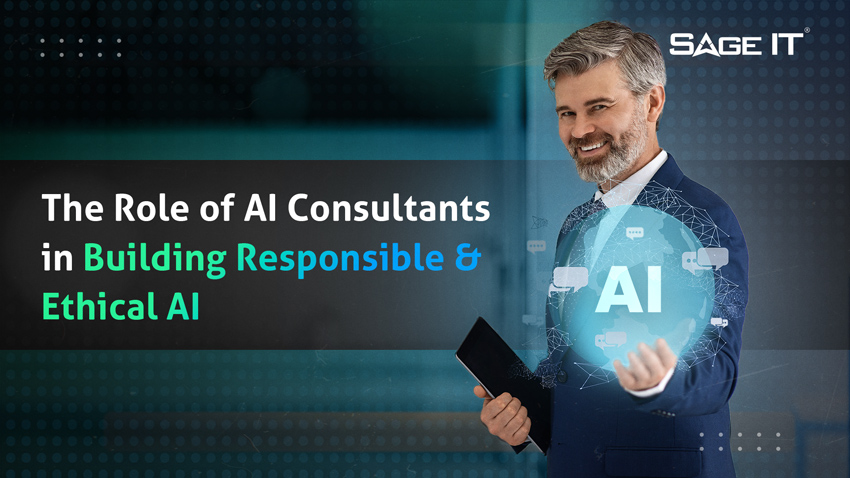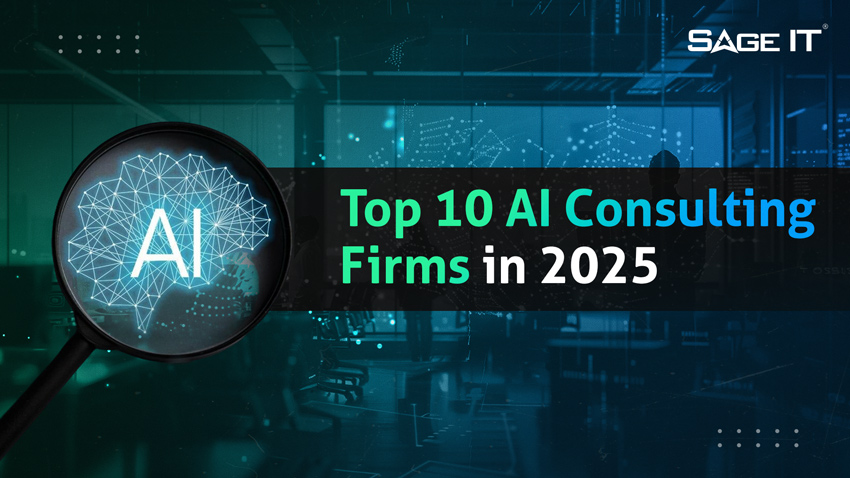Building a successful AI strategy is crucial for businesses that want to stay ahead and innovate. An AI strategy is a detailed plan showing how a company can use artificial intelligence to meet its goals, improve efficiency, and grow. This strategy isn’t just about adding AI technology; it’s about integrating AI smoothly into the company’s daily operations and decision-making processes.
An AI strategy is important because it provides a clear path for using AI tools and methods in ways that match the company’s goals and values. It ensures that AI projects are focused, scalable, and sustainable, allowing businesses to fully benefit from AI while reducing the risks associated with its use.
The need for an AI strategy comes from the powerful impact of AI technologies. AI can change many parts of a business, from automating simple tasks to giving deep insights through data analysis, improving customer experiences, and fostering innovation. However, without a clear strategy, businesses may not fully achieve these benefits. Planning strategically for AI helps in finding the right opportunities, effectively using resources, and making sure that AI solutions are implemented ethically and in line with the company’s long-term vision.
How to Build an Effective AI Strategy: Step-by-Step Guide
Step 1: Explore AI Opportunities & Use Cases for Your Business
The first step in creating an AI strategy is to identify where AI can be used effectively. AI is successful in many industries. In healthcare, it helps with diagnostics and customized medicine. In finance, it improves fraud detection and trading. In retail, it enhances customer service with chatbots and tailored recommendations.
To find the right AI opportunities for your business, start by looking at your processes to see where AI can add value. Collaborate with different departments to understand their challenges and goals, and brainstorm potential AI solutions. This teamwork ensures that the AI use cases are practical and suited to your organization’s needs. By carefully exploring and selecting the right AI opportunities, businesses can build a strong foundation for their AI strategy.
Step 2: Assess Your Organization’s Priorities & Capabilities
Understanding business priorities is key to aligning your AI strategy with your company’s goals. Start by clearly defining your business objectives, such as improving customer experience, increasing operational efficiency, or driving innovation. Align AI initiatives with these goals to ensure your strategy supports the overall mission of the organization.
Next, evaluate your current capabilities and infrastructure. This involves assessing your existing resources, technology stack, and personnel skills. Use a checklist to evaluate factors like data quality and availability, existing IT infrastructure, AI expertise within the team, and current technology tools. Identifying gaps in these areas helps you understand what additional resources or training are needed.
By thoroughly assessing your organization’s priorities and capabilities, you ensure that your AI strategy is realistic and well-supported, laying a solid foundation for successful implementation and integration of AI technologies.
Step 3: Define Clear Objectives & Goals
Setting SMART goals is crucial for a successful AI strategy. SMART goals are Specific, Measurable, Achievable, Relevant, and Time-bound. These criteria ensure that your AI objectives are clear and focused. Specific goals provide a clear direction, measurable goals help track progress, achievable goals ensure feasibility, relevant goals align with business needs, and time-bound goals set a deadline for completion.
Aligning AI goals with your business strategy is important for smooth growth. Start by matching AI goals to your company’s main objectives, like improving customer satisfaction, increasing efficiency, or driving innovation. For example, if your business strategy focuses on customer experience, set AI goals to improve recommendations or automate customer service. This way, AI efforts will support and enhance your overall business mission.
Step 4: Identify Potential Partners & Vendors
Finding suitable AI vendors and partners is crucial for building a successful AI strategy. Start by identifying criteria for selecting the right partners. Look for vendors with a proven track record in AI implementation, relevant industry experience, and strong security practices. Ensure they offer scalable solutions that can grow with your business needs.
When evaluating potential partners, focus on their technical expertise, customer support, and ability to customize solutions for your specific requirements. Review their past projects and ask for case studies or references from previous clients. Check if they are compatible with your existing infrastructure and if they provide comprehensive training and support.
By carefully selecting AI vendors and partners based on these criteria, you ensure that your AI initiatives are backed by reliable and capable experts. Partnering with specialized AI strategy consulting services can greatly enhance your AI roadmap, providing the necessary tools, expertise, and guidance to effectively achieve your business goals.
Step 5: Build a Comprehensive AI Roadmap
Building a detailed implementation plan is vital for a successful AI strategy. Start by outlining the specific steps and milestones needed to reach your AI goals. Define key phases, such as initial research, pilot projects, full-scale implementation, and continuous monitoring. Assign responsibilities and set clear deadlines for each phase to ensure accountability and progress.
Agility and iteration are crucial for an effective AI roadmap. Highlight the importance of flexibility, allowing your team to adapt to new insights and challenges as they come up. An iterative approach involves regularly reviewing and refining your strategy based on feedback and results. This ensures that your AI initiatives stay relevant and effective over time.
Step 6: Present the AI Strategy to Stakeholders
Communicating the AI strategy clearly is essential for gaining stakeholder support. Start by preparing a straightforward presentation that highlights the benefits and goals of the AI strategy. Use simple language and avoid technical jargon. Include visual aids like charts and graphs to illustrate key points. Explain how the strategy aligns with overall business objectives and the potential return on investment.
Getting support from stakeholders means involving key decision-makers early on. Schedule individual meetings to address their concerns and gather feedback. Show how the AI strategy can solve current business challenges and improve efficiency. Highlight the competitive advantages and potential growth opportunities. Using case studies or examples of successful AI projects can also help build confidence.
Step 7: Initiate Training & Encourage Continuous Learning
Addressing skills gaps is crucial for a successful AI strategy. Start by assessing the current skill levels in your organization and identifying areas needing more training. To bridge these gaps, consider hiring experts, partnering with educational institutions, and offering internal training programs designed for your specific AI needs.
Training programs and continuous learning initiatives are essential to keep your team updated with the latest AI developments. Implement structured training sessions, workshops, and online courses to enhance your team’s AI capabilities. Encourage a culture of continuous learning by providing access to resources such as industry publications, webinars, and conferences. Regularly update your training programs to include new tools and techniques.
Step 8: Establish Ethical Guidelines for Responsible AI Use
Addressing security, privacy, regulations, legalities, and ethics is essential for responsible AI use. Start by creating clear guidelines on how your AI systems will handle data securely and respect user privacy. Ensure compliance with relevant laws and regulations, and implement strong security measures to protect against breaches and misuse.
Setting standards for acceptable AI performance means creating benchmarks for technical and ethical quality. Define metrics to measure accuracy, reliability, and efficiency. It’s also important to set ethical benchmarks to ensure AI operates fairly, transparently, and without bias. Regularly review these standards to adapt to new challenges and advancements in AI technology.
Step 9: Assess & Adapt the AI Strategy Regularly
Regular reviews and updates are key to a successful AI strategy. Continuous assessment helps identify what works well and what needs improvement. Schedule regular check-ins to evaluate AI performance, measure outcomes against goals, and make necessary adjustments. This keeps your AI strategy effective and up-to-date with the latest developments.
Ensuring alignment with evolving business needs is essential. As your business grows and changes, its requirements will too. Regularly revisit your AI strategy to ensure it still supports your business objectives. Engage with stakeholders to gather feedback and understand new challenges. This proactive approach helps adjust your AI strategy to meet the changing needs of the organization, ensuring it continues to provide value and drive growth.
Benefits of Building an AI Strategy
Building an efficient AI strategy offers numerous advantages for businesses. It provides a competitive edge by enabling more efficient and effective operations through AI-powered tools that quickly analyze large amounts of data, uncovering insights that help companies stay ahead of market trends. AI enhances decision-making and productivity by providing data-driven insights and predictive analytics, leading to more informed choices, reduced risks, and increased efficiency. This translates into better resource management and overall performance.
An AI strategy also optimizes talent and technology choices by analyzing performance data and identifying skills gaps, allowing businesses to invest in the right training programs and hire the right talent. It ensures smoother integration of AI technologies into existing business processes, reducing the risk of disruptions and maximizing the benefits of AI adoption.
Moreover, an AI strategy supports risk management and disaster recovery planning, helping to establish structures and safeguards for success. It encourages a responsible and ethical approach to AI adoption, ensuring that decisions consider the needs of employees and customers alike. Cross-functional and cross-disciplinary AI adoption is facilitated, ensuring that AI tools are used effectively across different roles and divisions.
Ultimately, a well-defined AI strategy helps businesses identify and prioritize projects based on effort and estimated ROI, preventing the accumulation of technical debt and ensuring quick operation of AI solutions. This comprehensive approach leads to enhanced customer experiences, optimized productivity, and sustained business growth.
Common Challenges and How to Overcome Them
Creating a successful AI strategy involves overcoming common challenges. Here are some key areas to focus on:
- Insufficient Data: AI systems need good datasets for accuracy. Improve data quality through better collection, management, and enhancement techniques.
- Lack of AI Knowledge: Fill gaps in AI understanding by investing in training, hiring experts, and working with consultants or educational institutions.
- Misalignment of Strategy: Ensure AI goals match overall business objectives to avoid wasted efforts. Regularly review and adjust the strategy to fit changing business needs.
- Scarcity of Talent: Address the shortage of AI professionals by hiring skilled talent, training current employees, and encouraging continuous learning through partnerships with schools.
Prepare internal data and operations for AI integration, prioritize ethical and legal concerns, manage new security risks, and use effective change management practices. Stay updated on AI technology and regulations to ensure compliance and maximize AI investments. By addressing these challenges systematically, businesses can create a strong AI strategy for growth and innovation.
Conclusion
Creating a successful AI strategy involves several steps. First, explore AI opportunities to identify where AI can be useful in your business. Next, assess your organization’s current skills and resources. Then, define clear objectives for what you want to achieve with AI. Finding suitable partners who can help with AI implementation is also important. Create a detailed AI roadmap, present it to stakeholders, and encourage continuous learning within your team. Establish ethical guidelines and regularly update your strategy to meet changing business needs. Starting your AI journey with a clear strategy can transform your business, driving innovation and growth. Begin building your AI strategy today to unlock the full potential of AI. What are your thoughts on building a successful AI strategy? Share your ideas and experiences in the comments below!

































